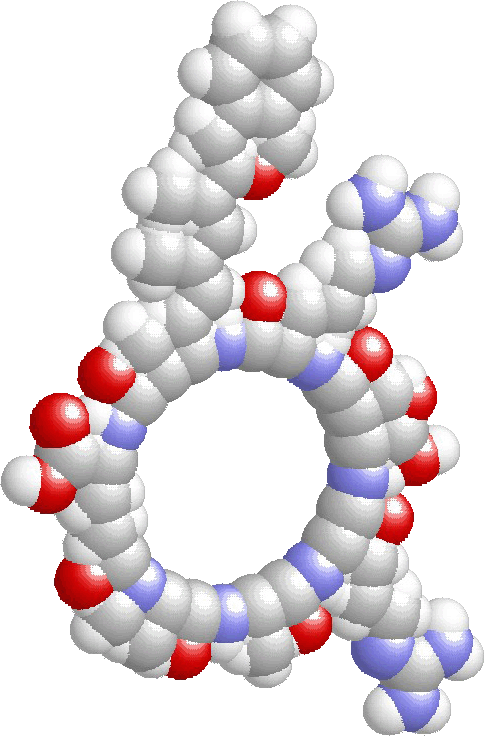

by
Michael B. Bolger, Ph.D.
Daily Graph of Russian River Low Flow Toxicity
Click here for a Periodic Blog on Observed Cyanotoxin levels and Factors that influence Russian River Toxicity
IMPORTANT DISCLAIMER: The prediction of anatoxin concentrations and the risk of toxicity to humans and animals presented on this web page should not be used to make decisions about personal safety or the use of Russian River recreation opportunities. These predictions are based on a simple mathematical relationship between river water temperature, river flow, and air temperature that will never be absolutely accurate. My intention for the publication of this model is to help the Sonoma County Water Agency and the Sonoma County Board of Supervisors to exercise adaptive management of Russian River flow and thus avoid the bloom of blue-green algae and potential river toxicity.
Sonoma County residents: Feel free to check this web site as often as you'd like to see the predicted Anatoxin-a concentration in Russian River. This simulation model does not provide specific geographical locations along the river for these predictions. The model uses daily river flow data from the gauge at Hacienda, water temperature at 3:00 PM in Guerneville. and air temperature also from Guerneville. If you'd like more detailed information about the equations used and background of the model development you can download the following report. Report on Water Quality, Draft EIR, and Simulation Model
Click here for a plot of the predicted change in daily anatoxin concentration
Please don't let the Sonoma County Board of Supervisors (SCBOD) ignore this easily avoidable and potentially life-threatening Russian River blue-green algae related toxicity! Encourage your supervisor and the Sonoma County Water Agency (SCWA) to adopt adaptive management of Russian River flows. Let's use an advanced computer model to predict when to expect a bloom of blue-green algae and the subsequent increase in cyanotoxin levels, and then adjust the river flow to easily avoid the potential toxicity.
Click here to see a blowup for just the Spring, Summer, & Fall of 2025.
Click here to see a blowup for just the Spring, Summer, & Fall of 2024.
Click here to see a blowup for just the Spring, Summer, & Fall of 2023.
Click here to see a blowup for just the Spring, Summer, & Fall of 2022.
Click here to see a blowup for just the Spring, Summer, & Fall of 2021.
Click here to see a blowup for just the summer of 2020.
Click here to see a blowup for just the summer of 2020 ASSUMING 10 cfs less flow!!!.
Click here to see a blowup for just the summer of 2020 ASSUMING 35 cfs less flow!!!.
NOTE: The July 30th 2018, August 6th 2018, August 13th 2018, July 13th, 20th, and August 17th 2020 observed levels were for microcystin at Camp Rose, Steelhead, Johnson's, and Patterson Point beaches.
My recommendation is for Sonoma County Residents to contact your supervisor and encourage them to instruct SCWA to utilize this type of simulation model to manage the Russian River flows when the conditions of flow, water temperature, and air temperature could give rise to this type of toxicity.
Here is a link to the Sonoma County Dept. of Health Services web page for current data on Blue-Green Algae and cyanobacteria:
SCDHS Blue-Green Algae
Here is a link to the State Water Resources Control Board (SWRB) web page for current data and a map of Blue-green algae and cyanobacteria outbreaks in California.
If you are interested in coliform bacteria levels, here is a link to the Sonoma Dept. of Health Services web page for coliform bacteria:
Coliform bacteria
NOTE: As reported in the Santa Rosa Press Democrat on July 20, 2022, the warmer water and reduced flow have resulted in the observation of blue-green algal mats below Monte Rio at Patterson Point and nine other locations upstream to Healdsburg as reported July 19th on the State Water Resources Control Board (SWRB) web page. Although a measurement of anatoxin-a was not reported, I have added an observed value of 10 ug/L for July 19, 2022.
NOTE: On August 3, 2021 the Sonoma County Department of Health announced that they would post Toxic Algae Alert warning on the 10 most frequented public beaches. They also reported Anatoxin-a concentrations measured at 5 separate beaches. The highest level reported was 8.36 ug/L and on Aug. 8, 2021 the Santa Rosa Press Democrat published an article entitled -- Toxic Algae Discovered in Russian River. According to the EPA and the Utah Department of Health, Anatoxin-a levels less than 4 ug/L are safe for short term exposure in drinking water. Anatoxin-a levels greater than 15 ug/L is the Warning level there is a potential for long-term illness. Short-term effects (e.g., skin and eye irritation, nausea, vomiting, and diarrhea). The Danger level is greater than 90 ug/L and it is advised for everyone to stay away from the waterbody Utah Advisory Level reference.
NOTE: As of June 25th 2020, SCDHS provided a notice that blue-green algae was observed in Salmon Creek Lagoon and that human sickness was reported. An observed value of 3 ug/L anatoxin on 6/25/2020 was added to the graph to note this event. Many areas of Clear Lake also had observed blue-green algae toxicity.
NOTE: On July 22nd 2020, SWRB web page reported the occurance of blue-green algae in Lake Ralphine (Santa Rosa). An observed value of 3 ug/L anatoxin was added to the toxicity model charts to mark this occurance.
NOTE: On August 17, and 27, 2020, the Sonoma County Health Department sampled several Russian River sites from Cloverdale to Monte Rio and did not find any evidence of a blue-green algae bloom or anatoxin-A concentration.
Thanks, Mike
If you have questions, you can E-mail me at: labsoft@comcast.net
Traffic Counter
